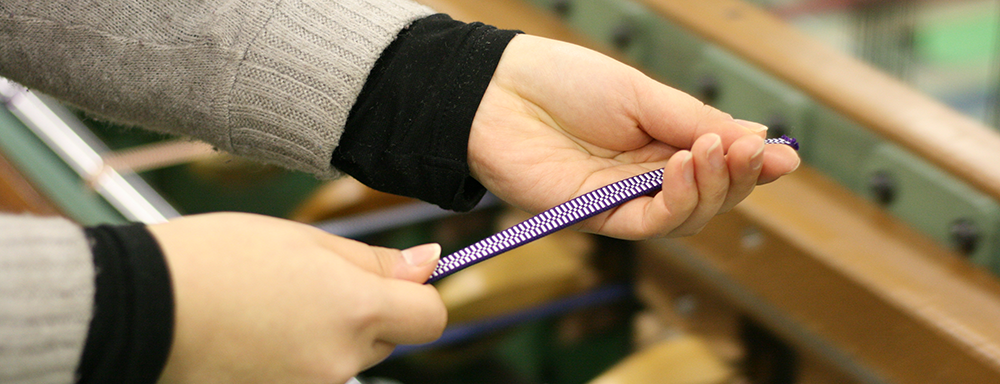How Sanada Himo Cords are Made
Raw Materials
We primarily use cotton or silk, dyed at workshops in Kyoto famous for Nishijin-ori textiles.
The threads are dyed using the latest technologies for beautiful, even coloration, or by seasoned experts who prepare pigments using traditional methods for threads with a distinctive uniqueness.
It is our pleasure to weave together Sanada Himo cords from threads made with only the finest techniques and materials.

Reeling (Warp) & Pirn Winding (Weft)
The threads dyed at these workshops are gathered together into bundles called "skeins."
Each skein is placed onto a reel, and the threads are rolled around tube-shaped bobbins.
It's critical to keep a close eye on this process, because if the tension on the threads is wrong for even a moment, it can cause the threads to tangle or break.

Warping
Sanada Himo cords are woven from threads organized perpendicularly into "warp," running along the length of the cord, and "weft," running across it.
Here, the warp threads are arranged as needed for the pattern to be woven.
When using pure silk, a Sanada Himo cord 9 mm wide requires 191 warp threads, while one 15 mm wide needs 303.
Each thread goes into the threader, one by one, in a process that requires incredible patience. It takes a great deal of experience to keep the tension uniform and consistent.

Heddling
The warp threads are spread open and the weft threads are pressed firmly into place among them to weave the desired pattern.
The way that the flexibility of the threads changes in response to the temperature and humidity must be taken into account as the warp and weft threads are woven together to produce these sturdy yet beautiful Sanada Himo cords.
This step requires close attention as well: even the slightest difference in the tension of the threads could cause them to break.
Inspection
Is the weave aligned properly? Are there any mistakes in the pattern?
At every step to the very end, our cords are checked with our discerning eyes and hands.
Once you've handled them yourself, we're sure that you'll agree that they are something truly special.








